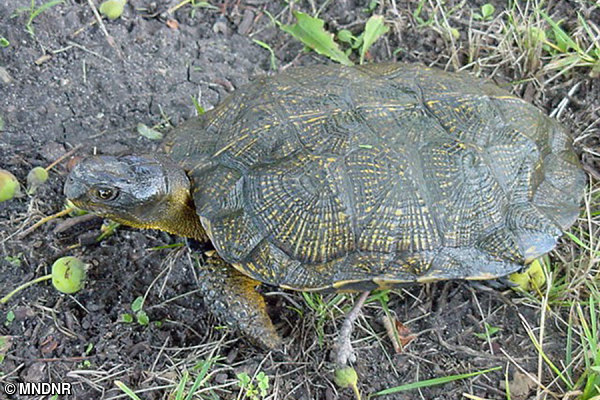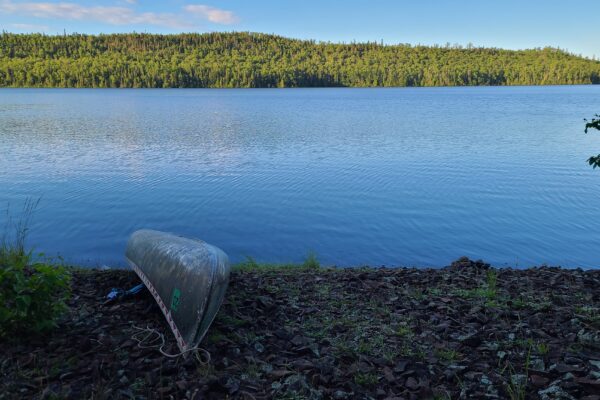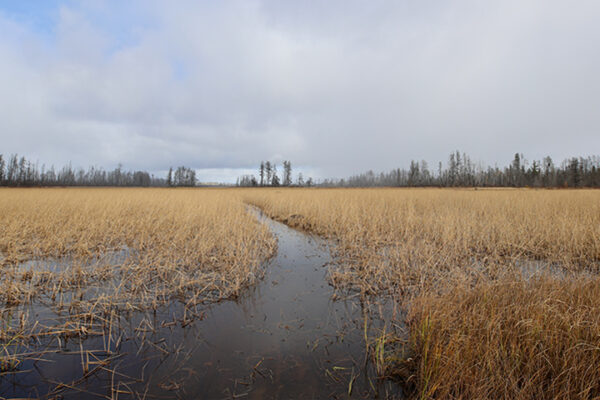DNR working to improve wood turtle habitat and nesting success in northeast Minnesota
Found within Minnesota’s diverse eastern landscape, wood turtles are known for their distinctive appearance, marked by intricate ridges that resemble little pyramids on top of the shell.
Of the thirteen turtle species in Minnesota, the wood turtle is the most terrestrial turtle found in the state. The wood turtle is generally found in a limited number of rivers and streams with either a sandy or gravel substrate for nesting purposes. Still, the species requires forested areas in the immediate vicinity for foraging.
“They tend to eat a variety of different things when they’re out foraging,” said Gaea Crozier, the nongame wildlife specialist with the Minnesota Department of Natural Resources (DNR). “So a lot of berries and leaves, mushrooms, they also eat invertebrates and worms, small fish eggs, and things like that. They are pretty opportunistic in terms of what they’re eating.”
Since 1998, the DNR has monitored wood turtle populations in southeastern Minnesota in partnership with the Minnesota Biological Survey and the Minnesota Zoo. The wood turtle is a state-threatened species and has been an area of focus for the DNR to understand the species better and help boost populations.
More recently, the DNR has expanded wood turtle research to the northeastern region of Minnesota, particularly in St. Louis County and Lake County.
The DNR’s Nongame Wildlife Program received two federal grants to conduct research in collaboration between the Minnesota DNR, Wisconsin DNR, Michigan DNR, and Iowa DNR to address threats to wood turtles across the region. “Here in Minnesota, we are working very closely with the University of Minnesota Duluth. Our grant funds have gone to support three graduate students on the project,” Crozier said.
Crozier said the main goal of the Wood Turtle Project is to try to reduce road mortality and increase nest success. Other project objectives include evaluating how well the management actions work both short and long-term, better understanding of the habitat, and expanding wood turtle surveys in rivers and streams.
Due to the terrestrial tendencies of the wood turtle, it is more susceptible to road mortality on northeastern backroads, Crozier said. “That makes them vulnerable to being hit by cars.” The research attempted to craft road barriers in known crossing areas to reduce mortality. However, Crozier said their team encountered significant challenges in this task.
“Unfortunately, we weren’t able to make the barriers very long because we would run into people’s driveways or places where people are accessing the river,” she said. “So it was just too easy for the turtles to come up to the barrier, and then just walk along it and then go around it.”
Crozier said the three-year road mortality survey will look at other tactics and work with local transportation agencies to address the problem.
Another critical component of the ongoing research is to improve nesting success. Crozier said one of the biggest surprises of the research so far is the level of badger predation. “We knew that we had badgers in the area, but we didn’t realize how much they’re responsible for turtle nest predation.”
The DNR states that badgers are found over most of Minnesota except in the heavily forested northeast. However, based on Crozier’s findings, badgers are prevalent in the wood turtle study areas within St.Louis and Lake County.
Wood turtles are known to live to 55 years of age but don’t reach sexual maturity until 14 or 15 years of age. “It’s an interesting species that way. They need to really survive those younger years to make it up into a large enough size that they’re protected from predators,” Crozier said.
So far, wood turtle research has found that most turtle nests have a 5% success rate.
In addition to badgers digging up wood turtle nests, Crozier said that the trail cameras showed that other predators, such as foxes, raccoons, skunks, and ravens, are common predators of nests. To reduce nest mortality, the DNR has used electric fences and created small cages over the turtle nests.
“This has been really successful for us. We have increased nest success to about 50%,” Crozier said. “So we’ve been able to produce a fairly large number of hatchlings this way and have a nice pulse of reproduction entering these populations.”
Another surprise finding Crozier said is that the research team discovered many deceased wood turtles on one of the rivers. “On one of the rivers, (we) found a fairly large number of turtle shells with remains and various levels of decomposition, no sign of why they died, or what happened, very abnormal compared to other work we’ve done,” she said. “So it’s really a big unknown. Very serious.”
“We’re going to submit those for testing to see if there might be a disease in the population that could have contributed to this,” Crozier said.
As the DNR continues with its wood turtle research, Crozier said the outlook for the species is concerning. After decades of research, the species is being considered for listing under the Federal Endangered Species Act. “It’s a species that we’re concerned about not just in Minnesota but across its range.”
WTIP’s Kalli Hawkins spoke with Gaea Crozier, the nongame wildlife specialist with the Minnesota DNR, about the current wood turtle research in the state’s northeast region. Audio from the interview is below.














